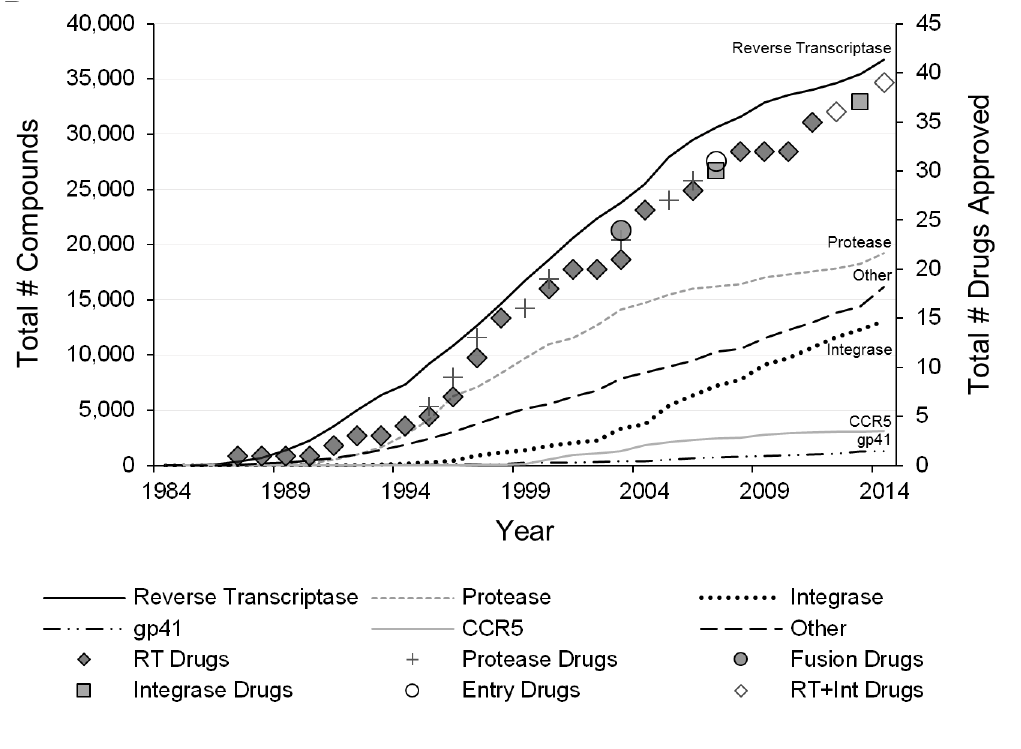Analysis of Chemical Structures and Therapeutic Activity of Agents for HIV and Tuberculosis
National Institute of Allergy and Infectious Diseases
Overview
For over 10 years, Gryphon Scientific has managed NIAID’s ChemDB Database, a publicly available database with a diverse set of data describing the biological activity and chemical properties of small molecules with potential therapeutic applications for human immunodeficiency virus (HIV) and Mycobacterium tuberculosis. Gryphon leads a team in a variety of tasks to maintain the database and facilitate use of the data, including literature surveillance, data abstraction, and advanced scientific analysis of drug development data. The database has been used by researchers at NIAID, across the U.S., and internationally for structure-activity relationship studies, virtual drug discovery, and other research to further discovery of therapeutics for HIV/AIDS and tuberculosis.

Methods and Results
In support of the public portion of ChemDB, the Gryphon team monitors public sources to identify literature describing small molecules with potential therapeutic applications for HIV and M. tuberculosis in the pre-clinical development stage, then abstracts complex chemical and biological data in a standardized fashion for addition to the database. In support of the proprietary portion of the database that includes confidential experimental data from NIAID partner laboratories, the Gryphon team performs literature reviews, advanced analysis of drug development data, and other support. ChemDB now contains more than 408,000 compounds from more than 32,000 references. Approximately 292,000 of these compounds are in the public dataset, and 115,000 compounds are in the proprietary dataset. Approximately 150,000 public compounds have associated anti-HIV data, 47,000 public compounds have associated anti-Mycobacterium tuberculosis data, and 111,000 public compounds have data on other pathogens. The database has been used by researchers at NIAID, across the U.S., and internationally to further drug discovery.
Publication Highlight: Gryphon publishes review using NIAID’s ChemDB to explore trends in funding and HIV drug development
Gryphon Scientific performed a retrospective analysis of trends in HIV small molecule drug development over the last 35 years using data from the ChemDB database, published in the December 2020 issue of the Journal of AIDS & Clinical Research. The paper analyzes these data alongside data on NIH funding, U.S. Food and Drug Administration drug approvals, and new target identifications to explore the influences of these factors on anti-HIV drug discovery research. This analysis demonstrated that levels of research activities follow funding trends and that interest in HIV therapeutic research activities remains strong despite the increasingly wide suite of therapeutic options that have accumulated over the past few decades. The paper further evaluates the nuances in these trends and discuss implications for future research on HIV therapeutics and development of new therapeutics. The full publication can be read here.
Gryphon Authors: Dr. Froggi Jackson, Louise Sumner, Mikaela Finnegan, Dr. Emily Billings, Dr. Margaret Rush
Resources
- Government-hosted ChemDB website
- The Journal of AIDS and Clinical Research publication
- CLIENT | National Institute of Allergy and Infectious Diseases
- GRYPHON STAFF | Louise Sumner, Dr. Glen Noble, Matthew Whiting, Dr. Margaret Rush
- PARTNER | General Dynamics Information Technology

